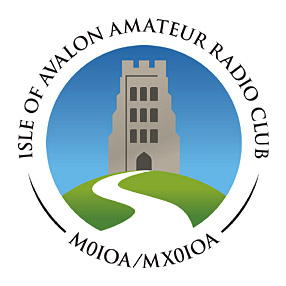RSGB MGM contest 20-21 April 2019
Contests are the Marmite of amateur radio, you either love them or hate them. They are a numbers game, rather than a way to get to know your fellow amateurs in depth. On the other hand the limited exchange of an FT8 contact is very close to that of a contest, and FT8 makes for a more leisurely pace. The Isle of Avalon Amateur Radio Club has taken to digimodes in a big way, so this could be something we take on.
One of the advantages of becoming an RSGB affiliated club is the ability to enter RSGB contests as a club, even if some individual operators aren’t members. So I thought I would try this RSGB contest as a solo operator and see what the process of sending in a check log is. A check log because as a non-member1 I am a non-contesting station.
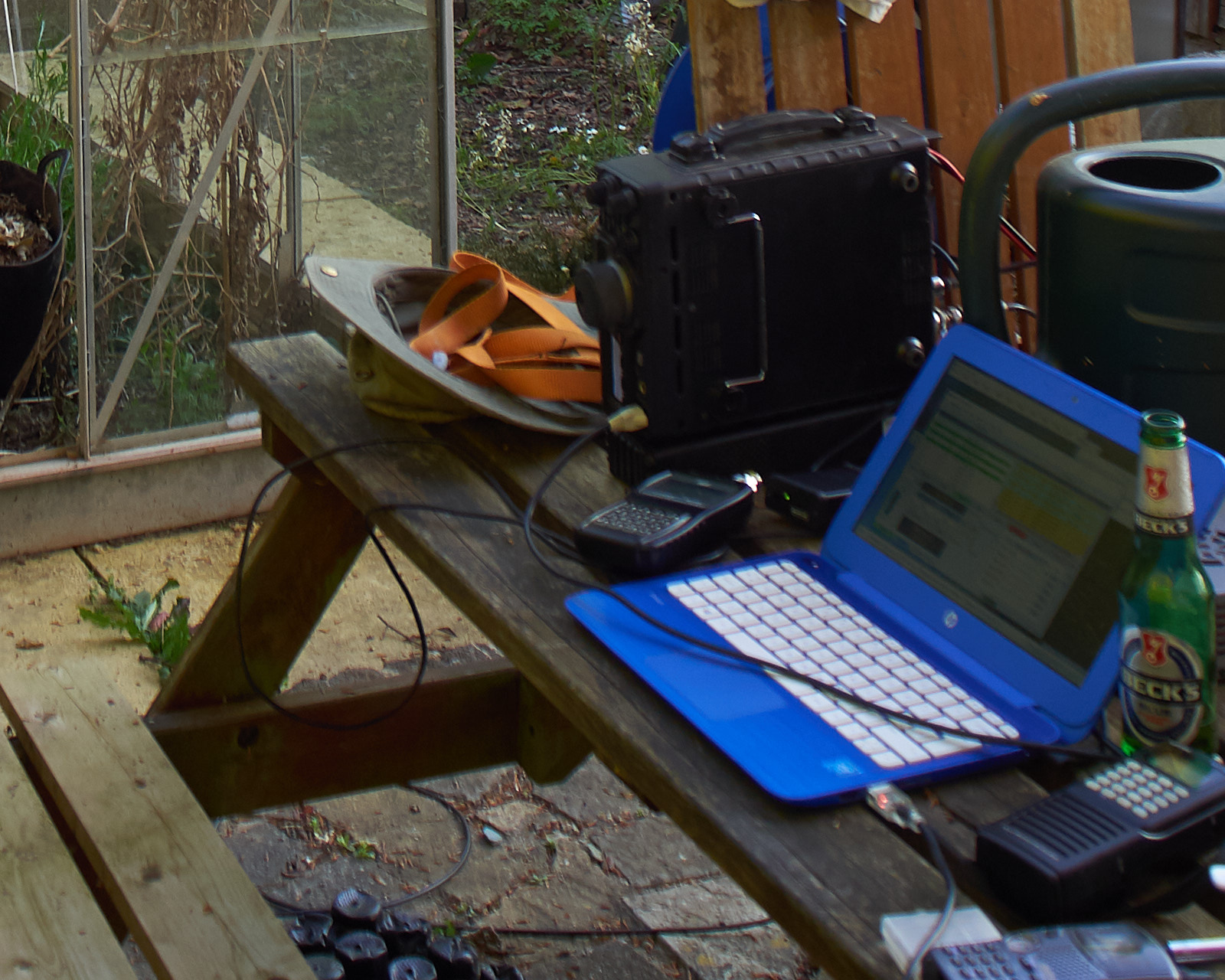
The Easter weekend was blazing sunshine, the hottest Easter for 70 years. This was an opportunity to sit in the garden, drink beer and try and make some contacts. I didn’t really know what to expect, this was a 2m and 6m contest. The rules are here. I have no previous experience of contesting. I wasn’t really sure what multipliers were though the one point per km seemed easy enough, favour distant stations. As it turns out it doesn’t matter whether I understand the scoring properly 2, because the RSGB has software to do this job for me.
I used a five element Yagi on 2m and a folded dipole with a 4:1 cable balun on a fishpole, fortunately the weekend was still, so I didn’t need to guy the fishpole. The yagi was lower than I’d have liked, only about 2m high. The fishpole was definitely not up to the job of supporting the yagi. I worked 15 stations in the 24 hour period, 10 on 2m and five on 6m. It was harder than I had expected. There did not seem to be a time limitation on operating for this contest but I didn’t really push myself, I was on 14:00 - 19:00 UTC on Saturday and 09:15-14:00 on Sunday.
Results
I used the RSGB mapper to show the stations worked, and PSKreporter to evaluate my reach.
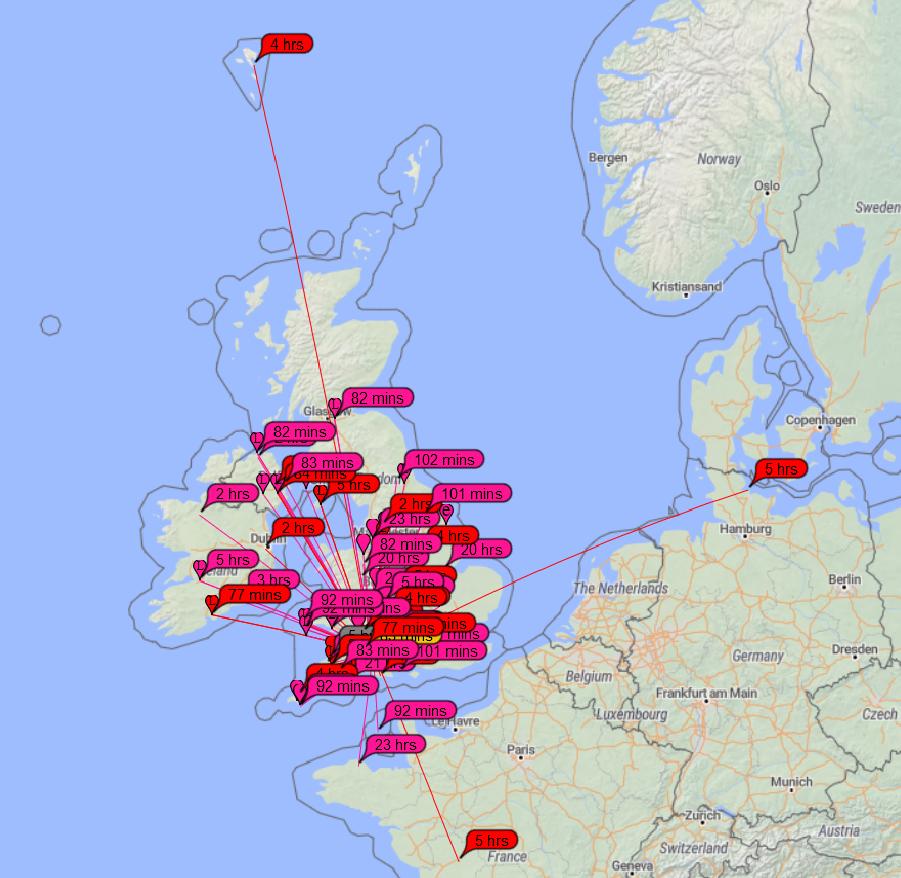
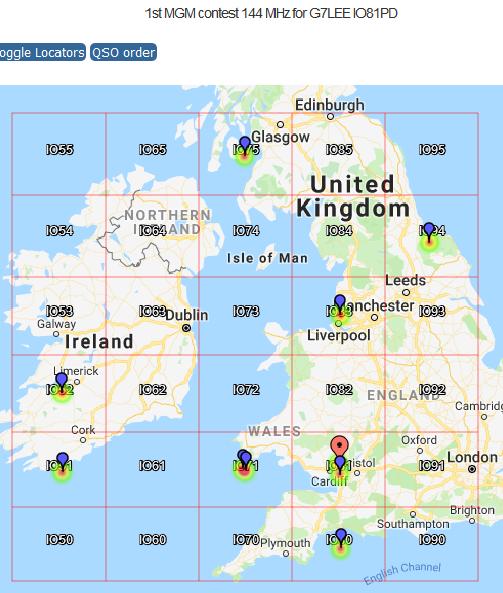
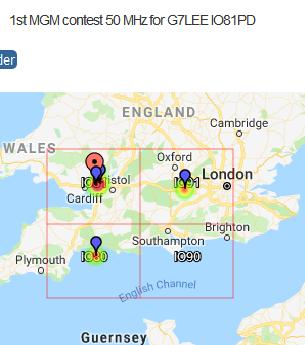
Unfortunately the resolution of FT8’s locator is quite coarse, so the mapper overlays stations in the same squares.
According to the RSGB process at the time of writing I am the weakest entry for 2m at the bottom of the list but not the bottom of 6m. I am generally weak on multipliers, which was not some thing I was even aware of. My main priority was to avoid working the same station twice and then slightly to favour distance.
I did look for PSK31 activity but didn’t find any.
submitting the logs to the RSGB
You can’t just upload the adif file to the RSGB. Their how to enter page is here. I first needed to strip out everything but the contest entries from the .adi file generated by WSJT. Fortunately that is a text file and the format is fairly obvious
WSJT-X ADIF Export<eoh>
<call:5>M0AHN <gridsquare:4>IO91 <mode:3>FT8 <rst_sent:3>-10 <rst_rcvd:3>-04 <qso_date:8>20190420 <time_on:6>144615 <qso_date_off:8>20190420 <time_off:6>144700 <band:2>6m <freq:9>50.314878 <station_callsign:5>G7LEE <my_gridsquare:6>IO81pd <eor>
<call:6>GW0KZG <gridsquare:4>IO71 <mode:3>FT8 <rst_sent:3>-08 <rst_rcvd:3>-15 <qso_date:8>20190420 <time_on:6>151345 <qso_date_off:8>20190420 <time_off:6>151430 <band:2>2m <freq:10>144.175878 <station_callsign:5>G7LEE <my_gridsquare:6>IO81pd <eor>
I then had to save the file as a 2m file and a 6m file, and eliminate the unwanted band’s entries by hand. Once I had done that I was able to use Minos as recommended by the RSGB to get the parameters of the contest from the RSGB. I had to create a Minos contest for 2m and 6m separately, and then use file import adif to take the information from WSJT-X and get it into a format that I could upload to the RSGB. I did not find that a straightforward or obvious thing to do, but it worked in the end.
Equipment problems
My netbook computer overheated in the sun, so I used a silvered car windscreen barrier to keep the sun off the gear. The radio was fine, despite being black. I suspect some others had trouble from heating, I saw the odd station drifting down the audio band during a sequence of CQ calls, so I am thankful the Yaesu FT897 was relatively stable. I wasn’t able to work that signal and didn’t see anyone else manage, presumably there is some limit on tolerance of drift within a FT8 QSO.
I also had trouble with a ZLP MiniproSC audio interface when I got confused when trying to reduce audio levels into WSJT-X. The MiniPro SC keys the rig using VOX from the right-hand channel, and I had accidentally enabled the microphone loopback, so everything chattered as the incoming was fed back to the outgoing signal. I substituted this with another audio card, but it wasn’t the problem of the ZLP device, it was operator error, and when I googled this I used the ZLP again with the proper settings as it says in the fine manual.
That is good, because the whole point of using this rather than the cheapo soundcard I use with my home computer is if I run the computer and the radio from a single 12V battery one day, I really don’t want an earth loop with the ground going up and down as 10A is being drawn. The ZLP is isolated to prevent that. But I need to remember to engage brain when adjusting levels. Maybe stick a label on the MiniPro, because normally I use a regular USB sound card with mains powered computers and rigs, which are DC and AF ground isolated through the mains power supply.
On the first day I made the 6m dipole, but there was the usual balance of tuning it for lowest SWR and getting it into service. I made it to length, but it tuned about 3MHz low and a SWR of 1.8 at 50.313 MHz, which is the FT8 frequency. The first day I used the rig ATU to take out the mismatch, the second day I shortened the aerial to get a match of about 1:1.2. I made four out of five contacts on 6m on the second day. Of course, propagation may have been different and more people may have come out on Sunday, but all the same, this has not lessened my prejudice against nonresonant antennas ;)
I didn’t leave myself enough time to rig the 5 ele Yagi properly. I used it in the end of a drainpipe held by a short length of electrical conduit through the bracket. It was free to spin on the top of the drainpipe. Doesn’t really feel right to use the cable as an Armstrong rotator.
things I could do better
I need to understand multipliers. I could also use these to aim the Yagi better, without having to try and peak on the signal. A coax antenna switch would be a good thing, so I can use my Diamond collinear to listen omnidirectionally, even though the vertical will be cross-polarised for SSB. I had to swap this via the connectors. I discovered during this contest that there is more QRM on 2m from some directions than I had expected.
Although I used this mains powered, I have a good portable rig, so I could use this /M from a campsite or from a leisure battery. Another feeling I had was that paths over water were good.
Learn about scoring - I didn’t realise that the number of locator squares was significant. But it could also be a numbers game, I have fewest QSOs of the lot. Looking at the 2m entries more power and more elements seems advantageous, and simply more contacts.
I looked at the difference in spread between the people who could hear me and the people I could hear. On 2m it was reasonably balanced, but on 6m I clearly had less receive range than Tx range. All the higher scoring stations were using something better than a dipole, so I guess this asymmetry probably explains this.
Conclusion
It was a good experience, FT8 QSOs are leisurely, you can do other things at the same time. It’s a pretty laid back contesting exercise, though perhaps my results reflect a lack of focus as well as experience. An opportunity to drink beer in the sun on a Bank Holiday is a good thing ;) I learned more about my radio environment and my equipment, with lots of signals from various directions. I am little pistol rather than Big Gun, but there’s plenty that I could do better with my existing gear.
Richard G7LEE
-
and not a member of a currently Affiliated Club ↩
-
Where it does matter is in targeting your effort. It is clear from the claimed scores that I am weak on multipliers. ↩
